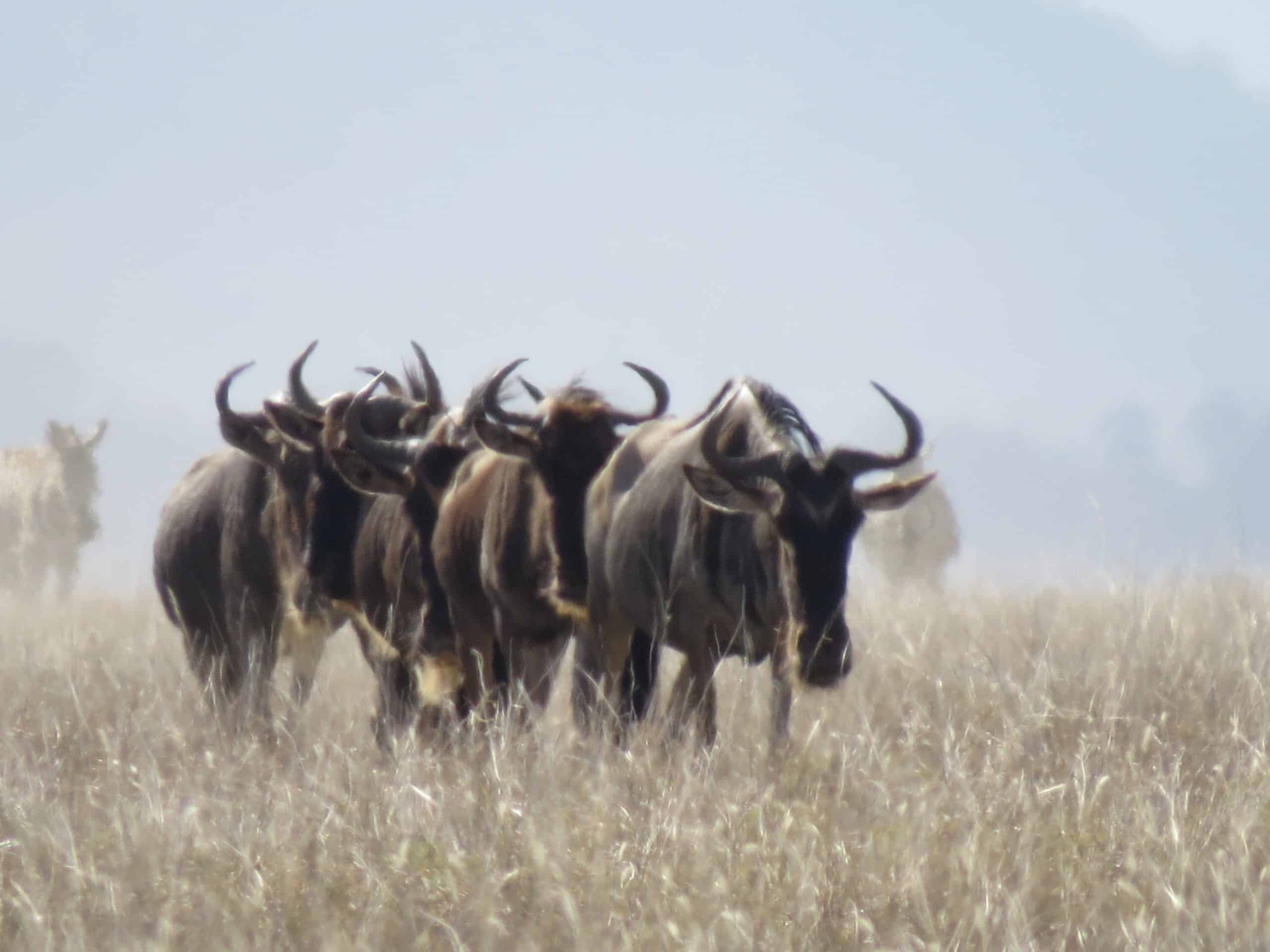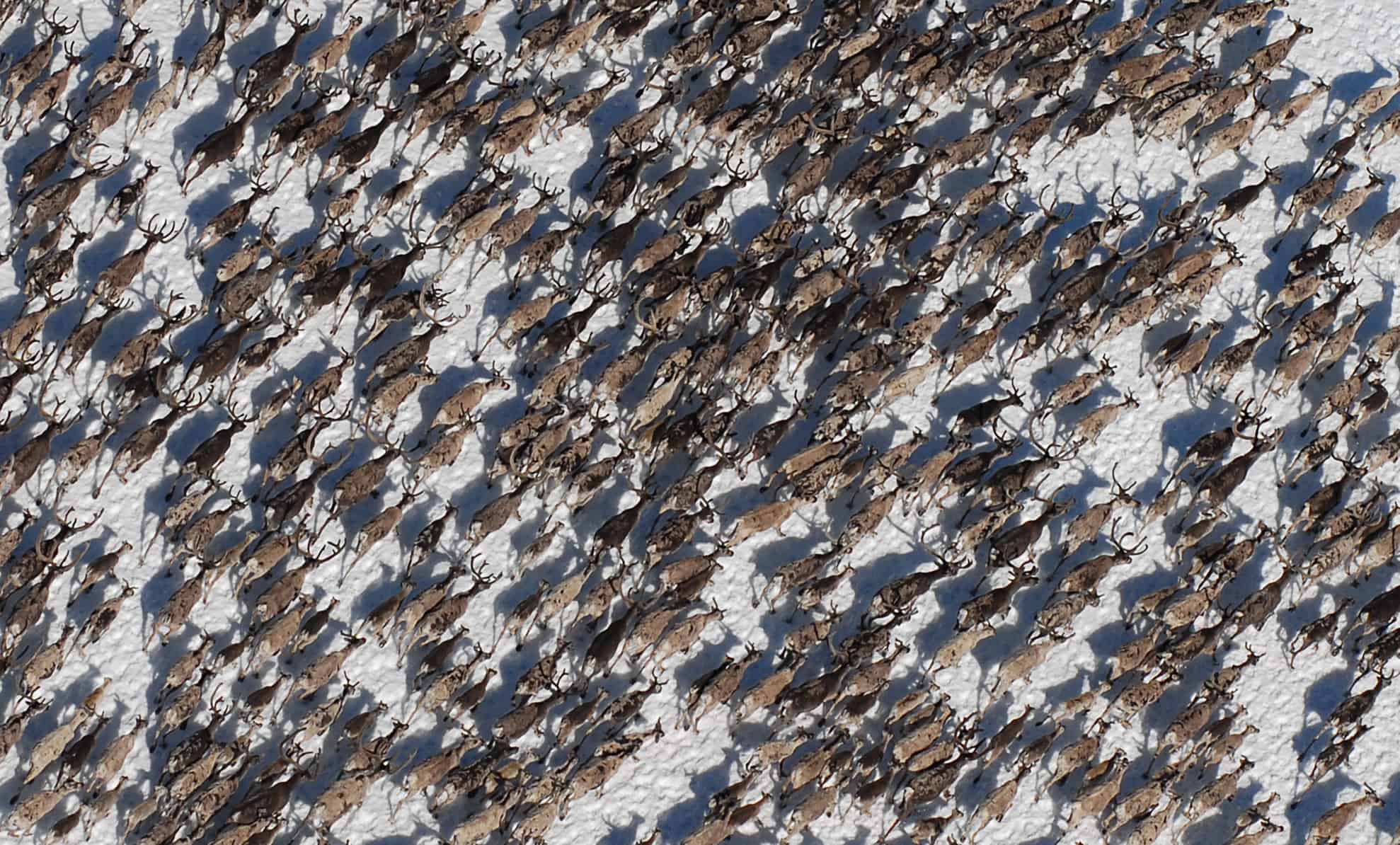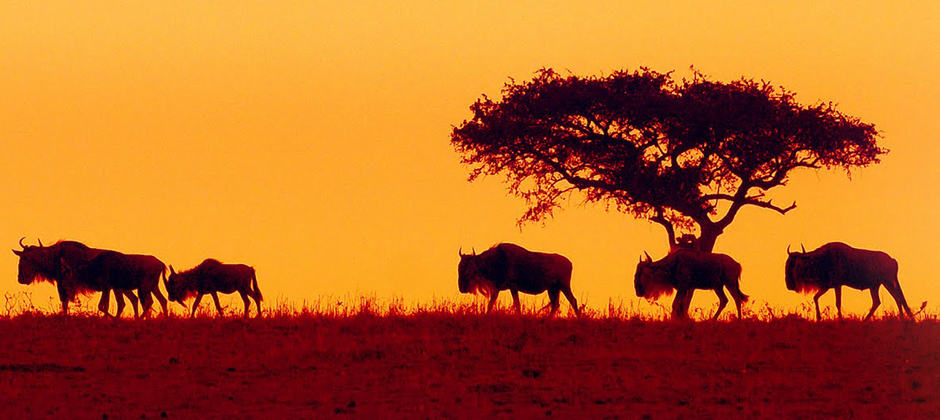Share this article
Global migration maps chart a course for conservation
Conservationists and scientists around the world are partnering with the United Nations to create the first-ever global atlas of ungulate migrations.
The initiative includes 92 partners working under the UN’s Convention on the Conservation of Migratory Species of Wild Animals (CMS).
The maps are being created at a time when habitat fragmentation threatens hooved animals around the world, from Mongolian gazelles (Procapra gutturosa) and saiga (Saiga tatarica) in Asia, to wildebeest (Connochaetes spp.) in Africa, to caribou (Rangifer tarandus), mule deer (Odocoileus hemionus) and elk (Cervus canadensis) in North America. Some of these species are in decline.

Wildebeest migrate across the Serengeti in Tanzania. Credit: Tom Morrison
“By 2050, at least 25 million kilometers of new roads are projected to be developed across the world,” said Amy Fraenkel, executive secretary of the Convention on the Conservation of Migratory Species. “Vast landscapes are being fragmented by roads, fences and railways, making it increasingly difficult for ungulate species to undertake their vital migrations.”
The maps are meant to inform decision makers about where the migration routes are to protect different species. In a commentary in Science, lead author Matthew Kauffman, a TWS member, and the other 91 partners in the Global Initiative on Ungulate Migration discuss the importance of this Ungulate Atlas, which was created using GPS tracking technology in conjunction with local and indigenous knowledge. The collaborators plan to build on existing data and ongoing research to keep the maps up-to-date.

Wild reindeer form a massive herd in Hardangervidda, Norway. Credit: Olav Strand
“The spread of our human footprint represents a common challenge for ungulate conservation across the globe,” Fraenkel said. “Without careful planning, migration routes can be permanently lost. These maps can help avoid that.”
In North America and Europe, the maps are already being used to target fences that need to be modified or removed, position road-crossing structures, adjust energy development footprints and conserve habitat on critical migration routes.
In addition to these maps, the Convention on the Conservation of Migratory Species of Wild Animals also recently reaffirmed their commitment to ecological connectivity at the recent meeting of the CMS Conference of Parties in February, 2020.
“Maintaining and, where necessary, restoring the connectivity of fragmented landscapes is essential for migratory species to be able to move — and to survive,” Fraenkel said.
Header Image:
Wildebeest are among the wildlife documented in a recent atlas of ungulate migration routes.
Credit: Munir Virani








